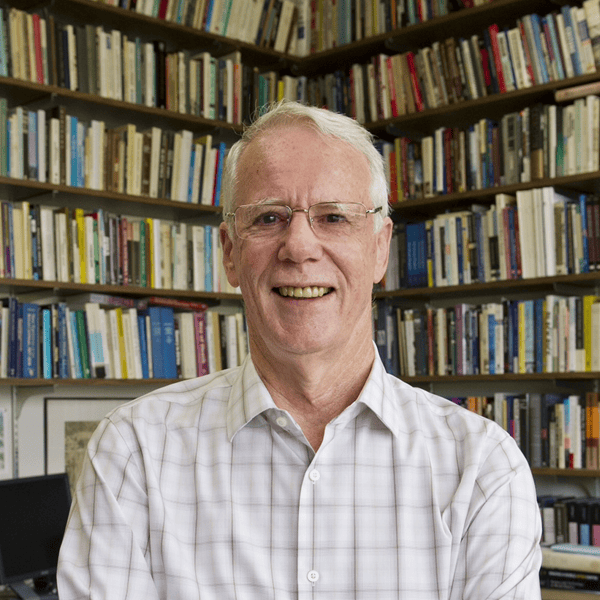The AHA’s annual meeting is the largest and most comprehensive gathering devoted to historical research, discourse, and teaching anywhere. The four days in Denver this January will include 459 formal sessions, in addition to many other meetings of historical groups. Of the total, 334 sessions were selected by the AHA Program Committee, while another 125 sessions were sponsored by 26 affiliated societies in widely ranging historical fields. For the individual conference participant, deciding which sessions to attend is always difficult.
This is my chance to speak personally about the program and some of its key aspects. I congratulate Program Committee chair Anand Yang and co-chair Edda Fields-Black for assembling a fine program, reflecting exciting new work at the frontiers of historical research, important advances in the teaching of history, and valuable discussions on history as practiced beyond the academy. My position as president enabled me to play two specific roles in the annual meeting: leading in selection of the conference theme and organizing a set of presidential panels. In this concluding column I write as president, I offer encouragement for you to include, in your enjoyment of the annual meeting, time to investigate the meeting’s theme—“Scale in History”—and attend the presidential sessions, which focus on world history, African history, and interdisciplinary history.
Tracing African connections with other world regions is an excellent way to gain a sense of global dynamics.
“Scale in History” is a historical framework that reaches beyond a given time period or historical debate. It asks historians to develop a language for comparing and linking small-scale to large-scale approaches to space, time, or topic, or to a combination of these. As the call for papers noted, “it may be that eclectic links of papers and panels throughout the conference will reveal links across the scales of history, documenting the interdependence of historians working in various specializations. . . . In 2017, we hope to push the boundaries of scalar analysis, developing practice and language by which researchers and students may describe links from the specific to the general or the other way around.” Altogether, 26 annual meeting sessions mention “scale” explicitly in their title, and others address scale more indirectly. On Saturday, for instance, three sessions will address scale in education, four in aspects of queer history, and one each in maritime history, Latin American development, blackness in the Southern Cone, illness, intellectual history, archaeology, and the history of science. These sessions go beyond identifying various scales in historical situations to trace the influence of the small-scale on the large-scale and vice versa.
I want to draw particular attention to the opening session on scale, on Thursday afternoon at 1:30: a roundtable with presentations by Daniel Lord Smail (Harvard Univ.), Patricia Seed (Univ. of California, Irvine), and Lara Putnam (Univ. of Pittsburgh). These presenters are expected to give their own ideas on scale in history, but also to provide comments and open a discussion on issues of scale that will arise in many of the conference sessions.
The remaining presidential sessions not only address scale in history, they also explore related themes: world history, African history, and interdisciplinary history. These are topics of my own interest, but I also offer them as of value to historians generally, as each encourages historians to reach out to seek out broad patterns in the past through comparison and connection. The nine sessions are listed in the program at the beginning of each time slot: there are two on Thursday, four on Friday, and three on Saturday.
As many as 57 sessions address world history. These present global-scale history but also explore local issues in global context. Three presidential sessions give attention to research and conceptualization in world history. The session “UNESCO: Researching Its Coordination of Scholarly Collaboration” (Thursday, 3:30 p.m.) brings the chief archivist of UNESCO, Dr. Jens Boel, to present on the content and organization of the UNESCO archives in Paris, notably on the information they provide on the international relations among scholarly organizations as coordinated by UNESCO since 1945. Boel will also speak about the many ways in which US individuals and institutions have supported the work of UNESCO. Two other panelists will report on research projects they have completed, relying especially on UNESCO archives.
In another presidential session, “New Research in World History” (Saturday, 1:30 p.m.), authors of dissertations in progress and recently completed dissertations will show how they have been able to achieve world-historical scope in their analysis yet still meet the standard of an archivally based dissertation. Given the range of topics and methods employed by these presenters—art history, economic history, intellectual history, and postcolonial studies—it is easy to understand why it should also be seen as a session in interdisciplinary history. At a conceptual level, the presidential session “World, Global, and Transnational Visions of History” (Saturday, 10:30 a.m.) brings together four leading scholars to describe their distinctive and sometimes contending visions of how best to research and write large-scale history. This session is in honor of the late Jerry H. Bentley, a noted world historian who made significant contributions to the AHA.
African history, in my view, is closely connected to world history even though it necessarily involves specifics about African localities. But tracing African connections with other world regions is an excellent way to gain a sense of global dynamics.1 The presidential session “Modalities of Modern Muslim Political Thought” (Friday, 1:30 p.m.) links two presentations on Africa and two on Asia to explore not so much the politico-military initiatives that dominate contemporary news but the underlying philosophical reflection in an Islamic world seeking to adjust to the power of non-Muslim regimes. Another presidential session addresses the 19th-century expansion of slavery in many regions. “The ‘Second Slavery’ Worldwide” (Friday, 3:30 p.m.) explores the expansion of enslavement in the Americas but also links and compares it to the temporally coincident expansion of enslavement in Southeast Asia, the Indian Ocean, and Africa. Not all of the enslavement was focused on production of goods for the market, but one is left with the question of whether there was a planetary logic that provoked this enormous yet terminal expansion in slavery. A third African session, “The Wiriyamu Massacre in Colonial African Historiography” (Friday, 8:30 a.m.), centers on a 1972 outbreak of violence in a Mozambican village, a killing that helped provoke revolution in Portugal and led to the independence of Mozambique. In an exercise of “forensic historiography,” the presenters ask how the massacre was revealed, how it fit into larger issues of mass violence in colonial Africa, what the role of women in the story was, and where the narrative stands today. These sessions, in my opinion, reflect major problems in world history rather than secondary issues in peripheral regions.
A second presidential session that is explicitly interdisciplinary is “Historians and Geneticists in Collaborative Research” (Saturday, 3:30 p.m.). This session makes the case that, in the current expansion of historical-genetic research, greater participation by historians is necessary to ensure adequate breadth and accuracy in the interpretation of genomic results. Presenting are Krishna Veermah (Stony Brook Univ.), a geneticist who works closely with historians of the Lombards, and Monica Green (Arizona State Univ.), a medieval historian who has led collaborative genetic work on the Black Plague. She argues for the need to achieve a “consilience” of genomics and history in the understanding of the pathogens causing the Second Plague Pandemic (14th–19th centuries).2 In a third paper, I will present commentary on key work that historians are doing and need to do in genetic analysis of the direction and timing of migrations in Paleolithic times.
For all of us attending the annual meeting, there is a wide range of choices. On one hand, we will be tempted to attend sessions that most closely reflect our own focuses in research and teaching—this is the chance to collect the latest news about our home turf. On the other hand, as the discipline of history broadens and takes up new issues, this is the best opportunity to learn about new research and thinking in areas that are different from our own specialization but of clear interest. Historians are accustomed to striking a balance among many competing areas of interest: as we return from the annual meeting to our home bases, we may bring back information on our specializations, on areas beyond our specializations, and perhaps an enhanced sense of how to use the notion of scale as a formal device for linking aspects of historical problems in teaching and in research.
Notes
- I have recently made the case for the benefits of emphasizing African and African diaspora history within world history as a way to strengthen the generality of world-historical analysis. Patrick Manning, “Locating Africans on the World Stage: A Problem in World History,” Journal of World History 26, no. 3 (2015): 605–37. [↩]
- On “consilience,” the unity of knowledge among different fields of study, see E. O. Wilson, Consilience: The Unity of Knowledge (New York: Knopf, 1998). [↩]
This work is licensed under a Creative Commons Attribution-NonCommercial-NoDerivatives 4.0 International License. Attribution must provide author name, article title, Perspectives on History, date of publication, and a link to this page. This license applies only to the article, not to text or images used here by permission.

